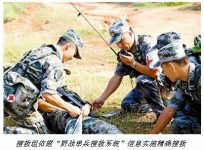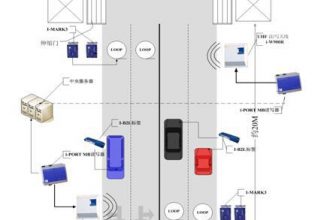
UHF RFID system helps solve military battlefield search and rescue to achieve precise positioning
[ad_1]
A battlefield rescue exercise under field conditions with actual combat as the background kicked off the battle in a mountainous area in southern Fujian. The army’s first “field individual search and rescue system” was successfully used on the “battlefield.” This means that our army has made a breakthrough in the precise positioning of individual search and rescue under field conditions.

In the smoke-filled drill field, the author saw that, in addition to carrying “electronic injury tickets” containing personal blood type, medication contraindications, medical history, and other information, each officer and soldier also wore a watch-sized signal transmitter on their wrists. At about 8 o’clock, the Seventh Company, which was in charge of the main attack, was attacked by artillery fire while it was attacking the “enemy” in depth. The injured officers and soldiers sent out distress signals through signal transmitters while carrying out self-rescue and mutual rescue.
In the complex and changeable battlefield environment, the inability to accurately locate the wounded has been a bottleneck that has always restricted the efficiency of battlefield search and rescue. After intensive research, they successfully developed the “Field Individual Search and Rescue System”, which integrates UHF radio frequency identification, wireless communication, bar code, software engineering and other technical means, through the second generation of “electronic injury ticket” Embedded links between the system and the integrated command platform have realized the transition from “rough search” to “precise positioning” in battlefield search and rescue.
The “Field Individual Search and Rescue System” screen in the field ambulance station frequently displays the wounded’s distress signal, and the flashing red dots on the electronic battlefield situation map clearly show the exact location of the wounded. “The third search and rescue team, there are 5 wounded in the depression on the south side of Highland No. 1, and they will quickly go out for search and rescue!” The search and rescue team moved on hearing the order and chose a nearby route to search. One of the “seriously wounded” was taken to the ambulance and immediately pushed onto the operating table. From the “seriously wounded” getting off the car to the start of the treatment, the entire process took only two minutes.
The injured have not arrived, and the injury information has arrived. Seeing through the large screen of the director’s department, after the search and rescue personnel arrived at the injured area, they removed the “electronic injury ticket” from the injured person and inserted the “injured information handset” to immediately display the natural situation of the injured, and quickly record the injury and injury. After the information of the Ministry and the injury category, it is sent to the field rescue station through the “electronic injury ticket” system. The field ambulance department reads the injury information and quickly prepares to receive the wounded.
[ad_2]




